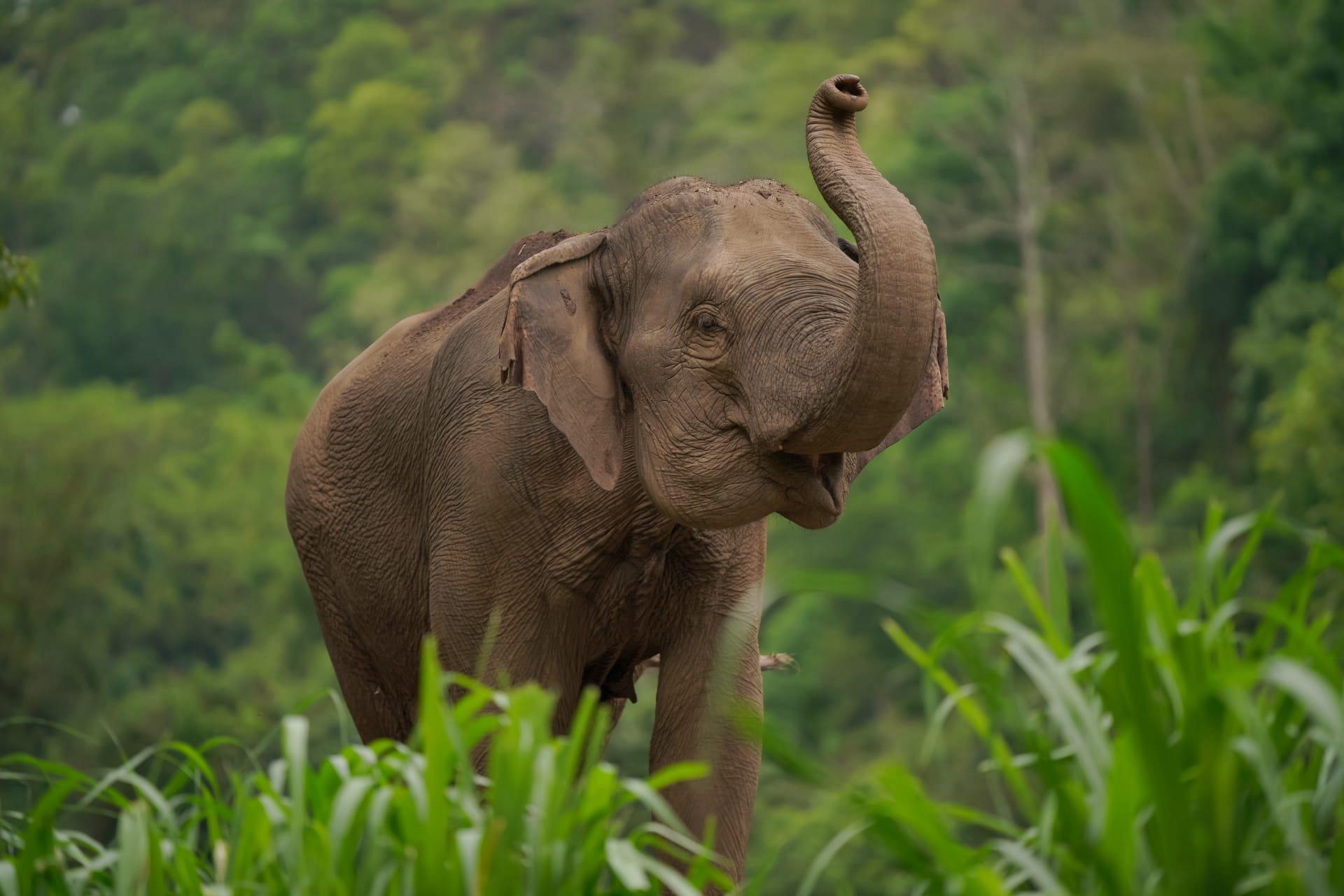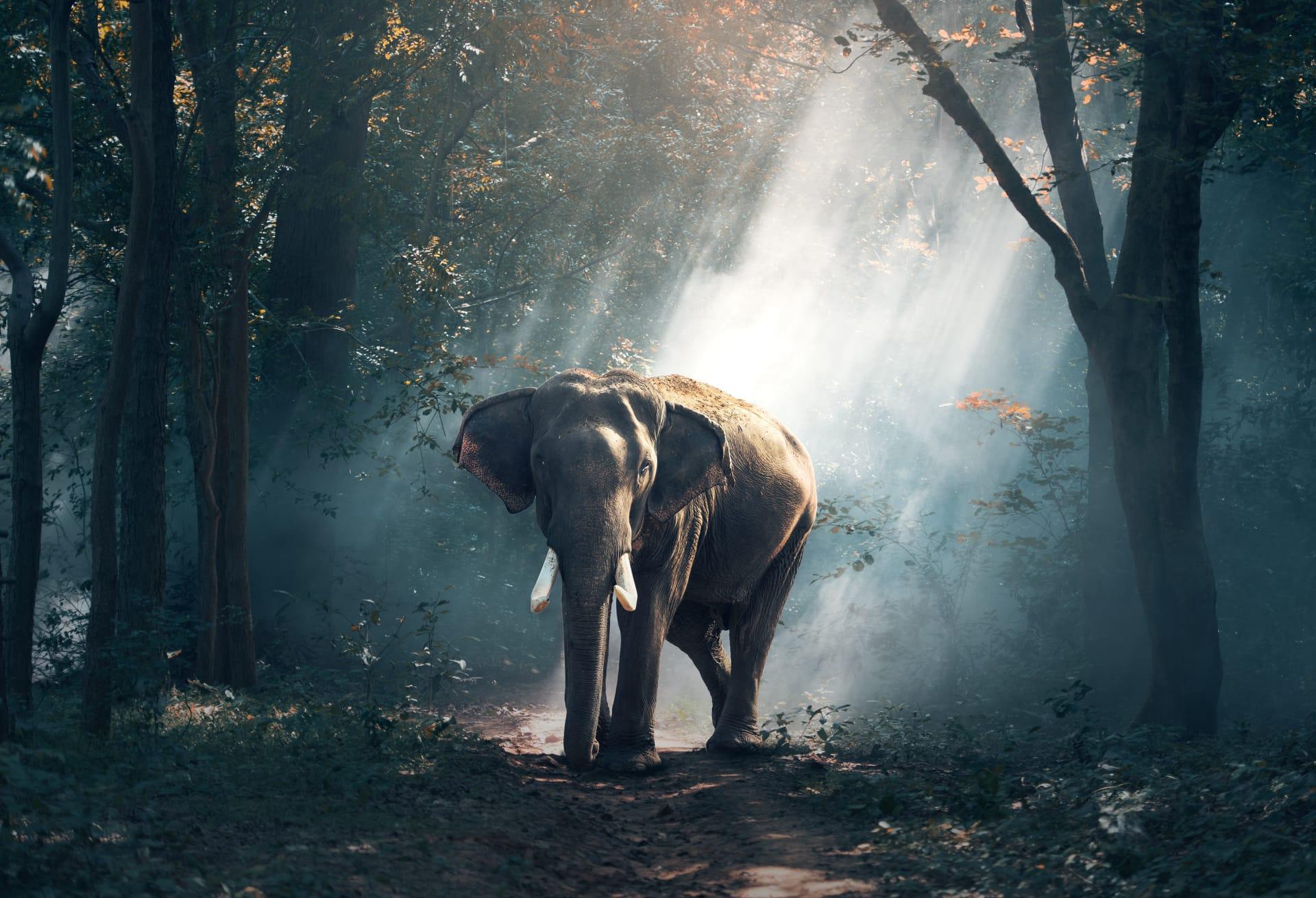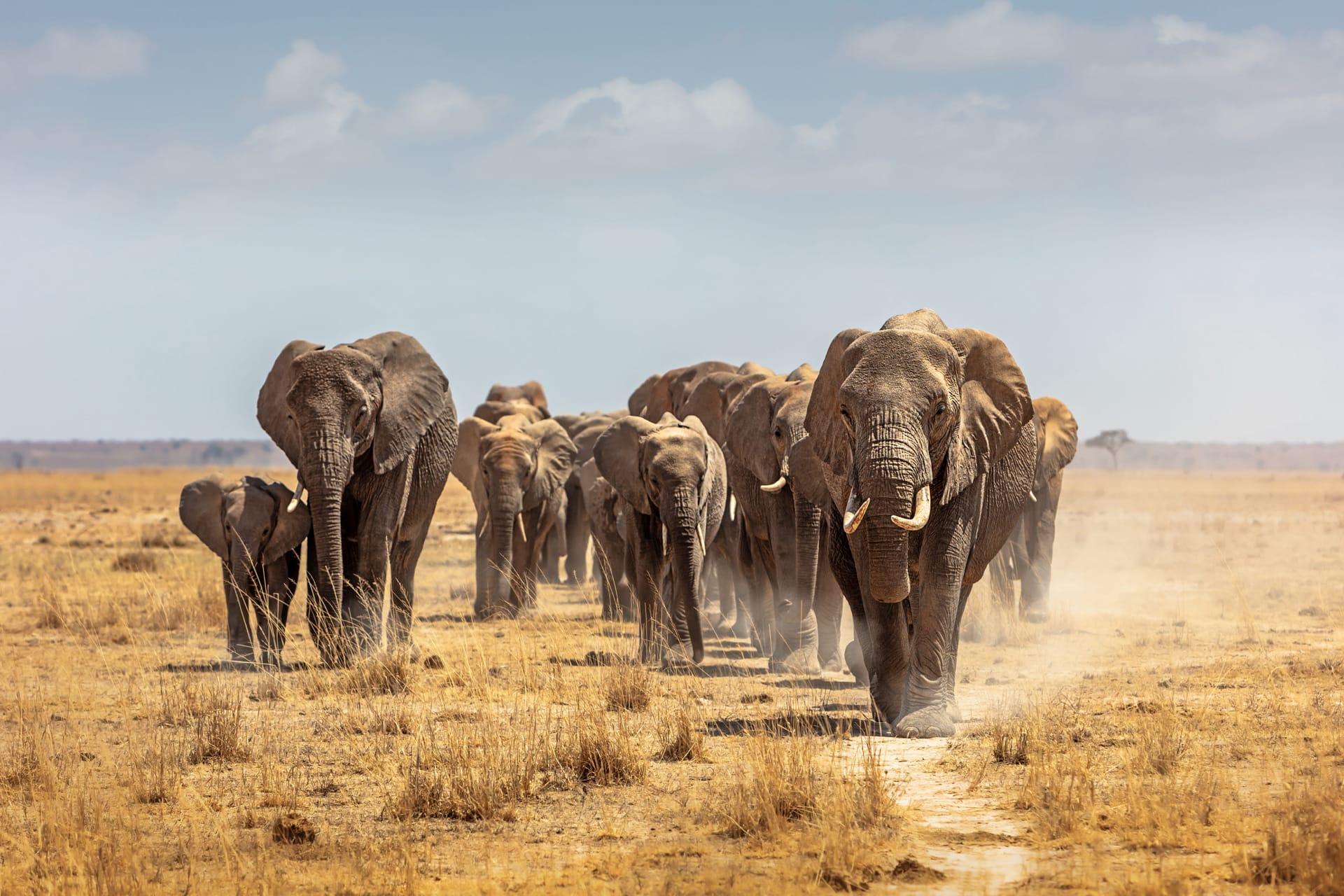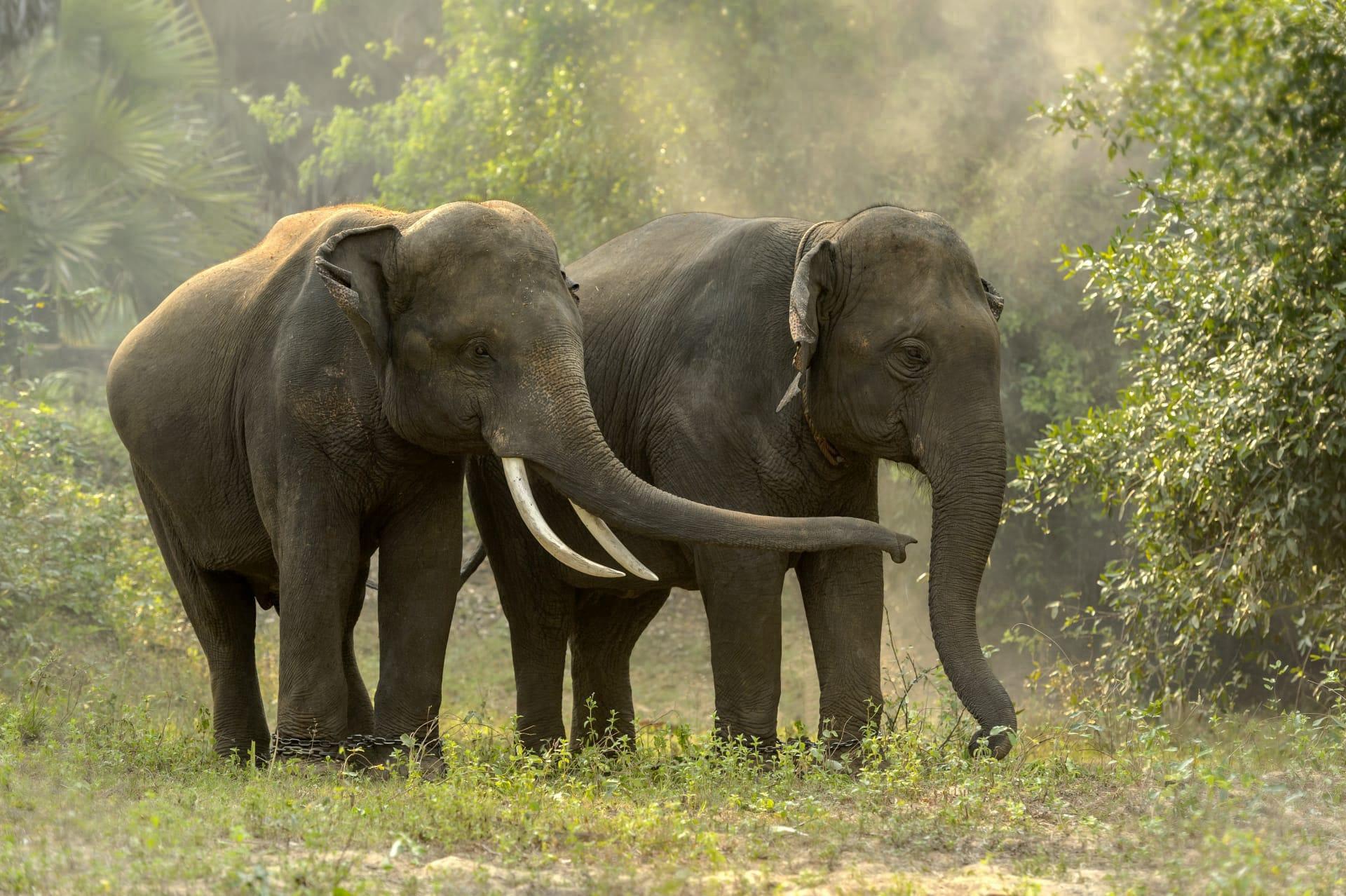Elephant Trivia
- Home /
- Trivia Question /
- Animal /
- Elephant Trivia
1
Question: How much can an elephant eat in a day?
Answer: Elephants are big eaters. An adult elephant can consume up to 300 kilograms of food in a single day. They spend about 16 hours a day eating, munching on a mix of grass, leaves, bamboo, bark, and roots. This massive intake is necessary to sustain their huge bodies, which can weigh as much as 6,000 kilograms.
Question: How long is an elephant's pregnancy?
Answer: Elephant pregnancies are remarkably long. A female elephant has a gestation period of about 22 months, one of the longest among land animals. This prolonged pregnancy allows the elephant calf to develop sufficiently to survive outside the womb, given its size and complexity. Upon birth, calves can weigh up to 120 kilograms and stand almost immediately.

2
Question: Do elephants really have exceptional memories?
Answer: Yes, elephants are known for their impressive memory. Research has shown that elephants can remember routes to water sources over many years, recognize familiar faces (both elephant and human), and even hold grudges. Their brains, the largest of any land animal, have advanced structures for emotion, spatial awareness, and memory.
Question: Is it true that elephants are afraid of mice?
Answer: Contrary to popular belief, there's no scientific evidence to suggest that elephants are afraid of mice. This myth likely arose from observing elephants' cautious behavior. They have poor eyesight but a strong sense of smell and hearing, and they might get startled by sudden, unexpected movements, regardless of the source.

3
Question: How much water does an elephant drink in a day?
Answer: Elephants drink a lot of water - up to 200 liters per day. This high volume is necessary to help digest the vast amounts of food they eat. They use their trunks like a giant straw, sucking up to 10 liters of water at a time before spraying it into their mouths.
Question: Why do elephants have tusks?
Answer: Elephant tusks are essentially elongated incisors, made of ivory. They serve various purposes: defense against predators, digging for water or salt, and lifting and moving objects. Tusks are also used in social interactions, such as displays of dominance and affection. Unfortunately, this ivory has led to significant poaching problems.

4
Question: Can elephants cry, laugh, or have feelings?
Answer: Elephants are highly emotional creatures. They can express joy, anger, grief, and compassion. Observations of elephants suggest they engage in behaviors that resemble crying and laughing. For example, they produce tears in emotional or stressful situations and make chuckling sounds when happy.
Question: How do elephants use their trunks?
Answer: An elephant's trunk is incredibly versatile. It contains about 40,000 muscles and is used for breathing, smelling, touching, grasping, and making sounds. Elephants can pick up objects as small as a coin or as heavy as a tree branch with their trunks. They also use them to drink, bathe, and help young elephants.

5
Question: What is the social structure of elephant herds?
Answer: Elephant herds are matriarchal, meaning they're led by an older, experienced female. The matriarch makes decisions for the group, like where to find food and water. Herds consist mostly of females and their young, while adult males, or bulls, tend to roam alone or in bachelor groups.
Question: How do elephants communicate with each other?
Answer: Elephants communicate through a complex system of vocalizations, body language, and even seismic signals. They use a range of sounds, from trumpets to low-frequency rumbles that travel long distances. These rumbles can be felt by other elephants through the ground. They also communicate through touch and visual signals, like the positioning of their ears and trunk.